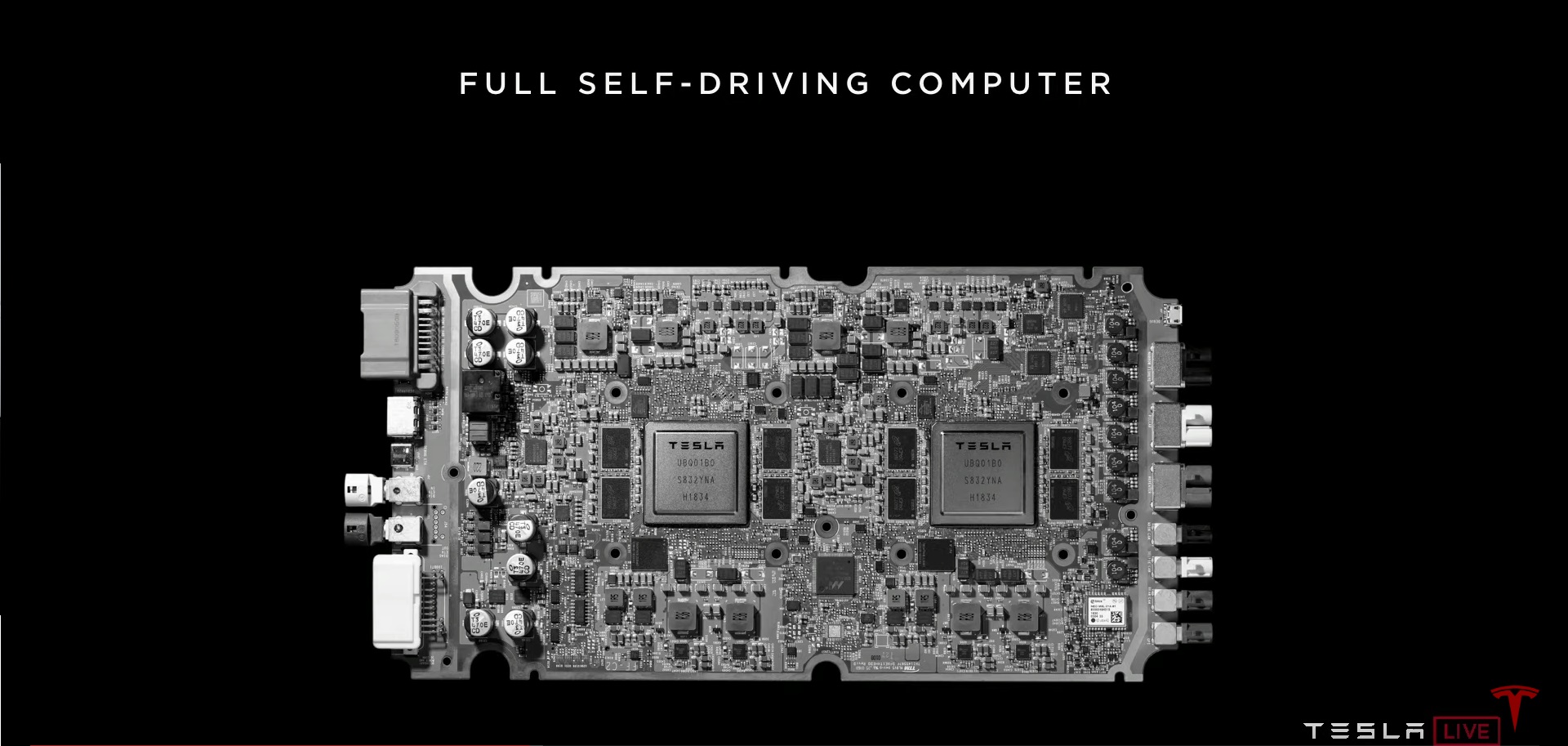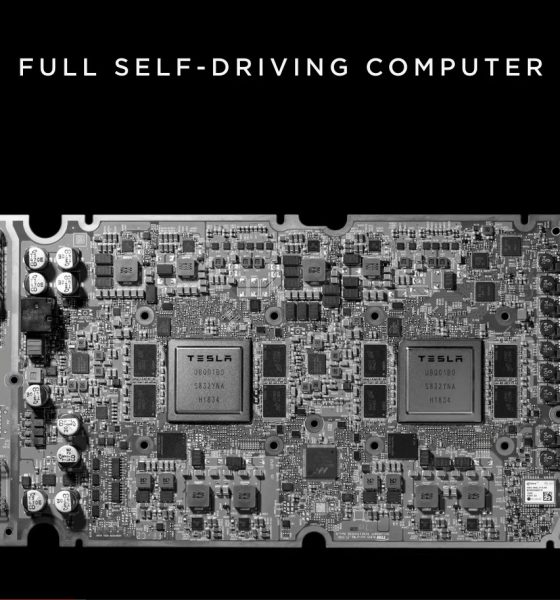

News
NVIDIA says Tesla raised the bar for self-driving tech, car makers must deliver
NVIDIA, a prominent and highly successful leader in computer chip design, says that Tesla has raised the bar in autonomous driving software, and other car makers will have to deliver similar performance if they want to compete in the long-term future of the auto industry, according to a recent NVIDIA company blog.
“It’s financially insane to buy anything other than a Tesla,” CEO Elon Musk stated during the company’s Autonomy Day event. He then compared the purchase of any other car as equivalent to buying a horse for one’s transportation purposes. NVIDIA, for its part, agrees with Musk and Tesla’s sentiments about the future of self-driving and the need for powerful computers to push its progress.
“Self-driving cars—which are key to new levels of safety, efficiency, and convenience—are the future of the industry. And they require massive amounts of computing performance… This is the way forward. Every other automaker will need to deliver this level of performance,” the chip maker wrote.
The type of autonomous driving technology Tesla is pushing is predicted to be the inevitable standard, and the company’s lead in the arena will likely increase even further as more of their vehicles take to the road. “By end of this quarter, about half a million Teslas will have full self-driving hardware (pending computer swap) & we will make another half million FSD cars by mid next year,” Musk tweeted, emphasizing this point and echoing what he’d explained the day prior.
Exactly. By end of this quarter, about half a million Teslas will have full self-driving hardware (pending computer swap) & we will make another half million FSD cars by mid next year.
— Elon Musk (@elonmusk) April 23, 2019
Tesla’s recent Autonomy Day presentation drew comparisons between the all-electric car maker’s Full Self-Driving (FSD) computer chip and those produced by NVIDIA, the only computer processing unit maker delivering performance in line with Tesla’s. NVIDIA currently has two self-driving chips in the works: the Xavier SoC (system on a chip) for assisted driving AutoPilot features, and the DRIVE AGX Pegasus computer for full self-driving. The comparisons in Tesla’s presentation were directed at the Xavier in a single-chip configuration.
The technical performance specifications required to run powerful artificial intelligence (AI) neural networks (NN) for autonomous driving require operations performed per second to be measured in the trillions – abbreviated as TOPS (tera operations per second). Tesla’s FSD computer chip can perform at a rate of 72 TOPS (x2 chips in the computer for 144 TOPS total), and the Xavier does 30 TOPS (mistakenly claimed to be 21 TOPS at Tesla’s event, per NVIDIA’s blog).
NVIDIA also expressed in the blog piece its opinion that the match between FSD and Xavier wasn’t quite an apples-to-apples comparison, given the purposes of the two chips. The chip designer prefers its DRIVE AGX Pegasus for the line-up, a computer intended for fully autonomous driving and capable of 320 TOPS. Tesla is assumingly aware of this product and obviously acknowledges the high level of technology developed by NVIDIA given that Hardware 2.5, the computer currently running Tesla’s Autopilot features, was made by the company.
 A Tesla with driver features “deleted” under the Tesla Network. | Image: Tesla
A Tesla with driver features “deleted” under the Tesla Network. | Image: Tesla
There are additional specifications such as power consumption that further differentiate FSD from NVIDIA’s products with a more similar purpose to Tesla’s latest computer. Thus, a different product match may not have mattered towards the overall point being made in the presentation. Either way, a more important distinction between the two companies is the current status of their technologies.
Tesla’s chip was crowned as “objectively the best in the world” by Musk, and this looks to be true, given the fact that all Tesla Model S, 3, and X vehicles being produced now have the hardware installed and will add to the already accruing real world self-driving data the company’s cars provide. NVIDIA has partnered with other car manufacturers to develop its products, but they are not incorporated in production vehicles the way Tesla’s FSD has been yet.
The performance Tesla has achieved in its FSD computer is impressive, and that was and continues to be the point. “[Autonomy] is basically our entire expense structure,” Musk told an investor inquiring about where the California-based company was incurring the most cost. Tesla is hedging its fiscal future on the success of autonomous driving in the marketplace, and the company is doing so with bullish energy driven by its famous top executive.
Musk expects Tesla’s Full Self-Driving software to be complete by the end of this year and fully operational by the second quarter of next year.

News
Tesla (TSLA) receives “Buy” rating and $551 PT from Canaccord Genuity
He also maintained a “Buy” rating for TSLA stock over the company’s improving long-term outlook, which is driven by autonomy and robotics.

Canaccord Genuity analyst George Gianarikas raised his Tesla (NASDAQ:TSLA) price target from $482 to $551. He also maintained a “Buy” rating for TSLA stock over the company’s improving long-term outlook, which is driven by autonomy and robotics.
The analyst’s updated note
Gianarikas lowered his 4Q25 delivery estimates but pointed to several positive factors in the Tesla story. He noted that EV adoption in emerging markets is gaining pace, and progress in FSD and the Robotaxi rollout in 2026 represent major upside drivers. Further progress in the Optimus program next year could also add more momentum for the electric vehicle maker.
“Overall, yes, 4Q25 delivery expectations are being revised lower. However, the reset in the US EV market is laying the groundwork for a more durable and attractive long-term demand environment.
“At the same time, EV penetration in emerging markets is accelerating, reinforcing Tesla’s potential multi‑year growth runway beyond the US. Global progress in FSD and the anticipated rollout of a larger robotaxi fleet in 2026 are increasingly important components of the Tesla equity story and could provide sentiment tailwinds,” the analyst wrote.
Tesla’s busy 2026
The upcoming year would be a busy one for Tesla, considering the company’s plans and targets. The autonomous two-seat Cybercab has been confirmed to start production sometime in Q2 2026, as per Elon Musk during the 2025 Annual Shareholder Meeting.
Apart from this, Tesla is also expected to unveil the next-generation Roadster on April 1, 2026. Tesla is also expected to start high-volume production of the Tesla Semi in Nevada next year.
Apart from vehicle launches, Tesla has expressed its intentions to significantly ramp the rollout of FSD to several regions worldwide, such as Europe. Plans are also underway to launch more Robotaxi networks in several more key areas across the United States.
News
Waymo sues Santa Monica over order to halt overnight charging sessions
In its complaint, Waymo argued that its self-driving cars’ operations do not constitute a public nuisance, and compliance with the city’s order would cause the company irreparable harm.

Waymo has filed a lawsuit against the City of Santa Monica in Los Angeles County Superior Court, seeking to block an order that requires the company to cease overnight charging at two facilities.
In its complaint, Waymo argued that its self-driving cars’ operations do not constitute a public nuisance, and compliance with the city’s order would cause the company irreparable harm.
Nuisance claims
As noted in a report from the Los Angeles Times, Waymo’s two charging sites at Euclid Street and Broadway have operated for about a year, supporting the company’s growing fleet with round-the-clock activity. Unfortunately, this has also resulted in residents in the area reportedly being unable to sleep due to incessant beeping from self-driving taxis that are moving in and out of the charging stations around the clock.
Frustrated residents have protested against the Waymos by blocking the vehicles’ paths, placing cones, and “stacking” cars to create backups. This has also resulted in multiple calls to the police.
Last month, the city issued an order to Waymo and its charging partner, Voltera, to cease overnight operations at the charging locations, stating that the self-driving vehicles’ activities at night were a public nuisance. A December 15 meeting yielded no agreement on mitigations like software rerouting. Waymo proposed changes, but the city reportedly insisted that nothing would satisfy the irate residents.
“We are disappointed that the City has chosen an adversarial path over a collaborative one. The City’s position has been to insist that no actions taken or proposed by Waymo would satisfy the complaining neighbors and therefore must be deemed insufficient,” a Waymo spokesperson stated.
Waymo pushes back
In its legal complaint, Waymo stated that its “activities at the Broadway Facilities do not constitute a public nuisance.” The company also noted that it “faces imminent and irreparable harm to its operations, employees, and customers” from the city’s order. The suit also stated that the city was fully aware that the Voltera charging sites would be operating around the clock to support Waymo’s self-driving taxis.
The company highlighted over one million trips in Santa Monica since launch, with more than 50,000 rides starting or ending there in November alone. Waymo also criticized the city for adopting a contentious strategy against businesses.
“The City of Santa Monica’s recent actions are inconsistent with its stated goal of attracting investment. At a time when the City faces a serious fiscal crisis, officials are choosing to obstruct properly permitted investment rather than fostering a ‘ready for business’ environment,” Waymo stated.
News
Tesla FSD v14.2.2 is getting rave reviews from drivers
So far, early testers have reported buttery-smooth drives with confident performance, even at night or on twisty roads.

Tesla Full Self-Driving (Supervised) v14.2.2 is receiving positive reviews from owners, with several drivers praising the build’s lack of hesitation during lane changes and its smoother decision-making, among others.
The update, which started rolling out on Monday, also adds features like dynamic arrival pin adjustment. So far, early testers have reported buttery-smooth drives with confident performance, even at night or on twisty roads.
Owners highlight major improvements
Longtime Tesla owner and FSD user @BLKMDL3 shared a detailed 10-hour impression of FSD v14.2.2, noting that the system exhibited “zero lane change hesitation” and “extremely refined” lane choices. He praised Mad Max mode’s performance, stellar parking in locations including ticket dispensers, and impressive canyon runs even in dark conditions.
Fellow FSD user Dan Burkland reported an hour of FSD v14.2.2’s nighttime driving with “zero hesitations” and “buttery smooth” confidence reminiscent of Robotaxi rides in areas such as Austin, Texas. Veteran FSD user Whole Mars Catalog also demonstrated voice navigation via Grok, while Tesla owner Devin Olsen completed a nearly two-hour drive with FSD v14.2.2 in heavy traffic and rain with strong performance.
Closer to unsupervised
FSD has been receiving rave reviews, even from Tesla’s competitors. Xpeng CEO He Xiaopeng, for one, offered fresh praise for FSD v14.2 after visiting Silicon Valley. Following extended test drives of Tesla vehicles running the latest FSD software, He stated that the system has made major strides, reinforcing his view that Tesla’s approach to autonomy is indeed the proper path towards autonomy.
According to He, Tesla’s FSD has evolved from a smooth Level 2 advanced driver assistance system into what he described as a “near-Level 4” experience in terms of capabilities. While acknowledging that areas of improvement are still present, the Xpeng CEO stated that FSD’s current iteration significantly surpasses last year’s capabilities. He also reiterated his belief that Tesla’s strategy of using the same autonomous software and hardware architecture across private vehicles and robotaxis is the right long-term approach, as it would allow users to bypass intermediate autonomy stages and move closer to Level 4 functionality.








